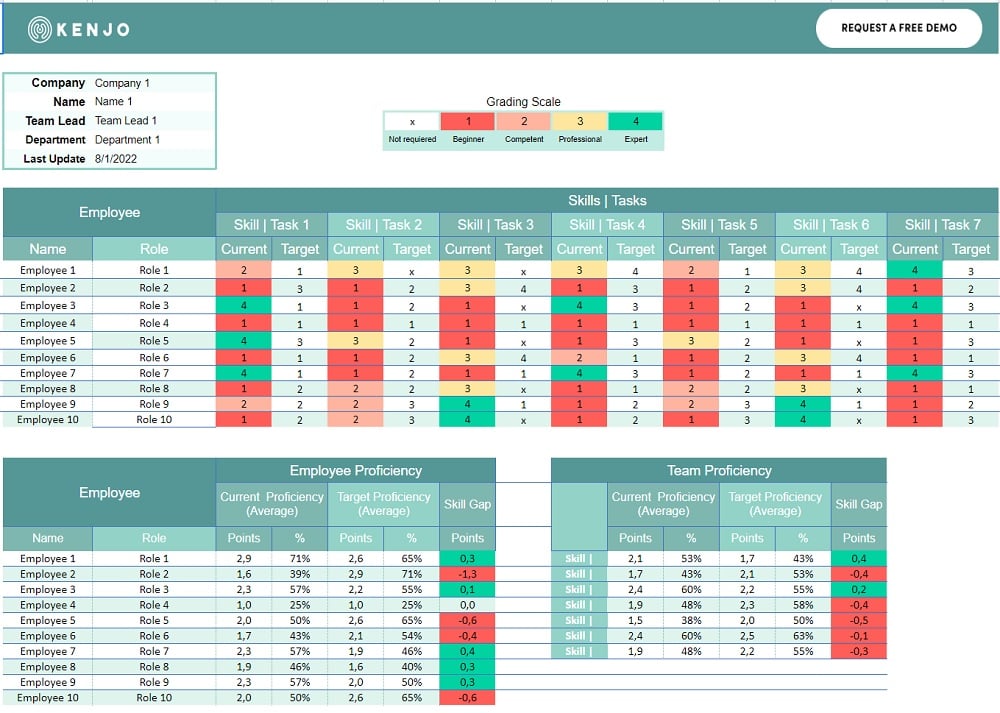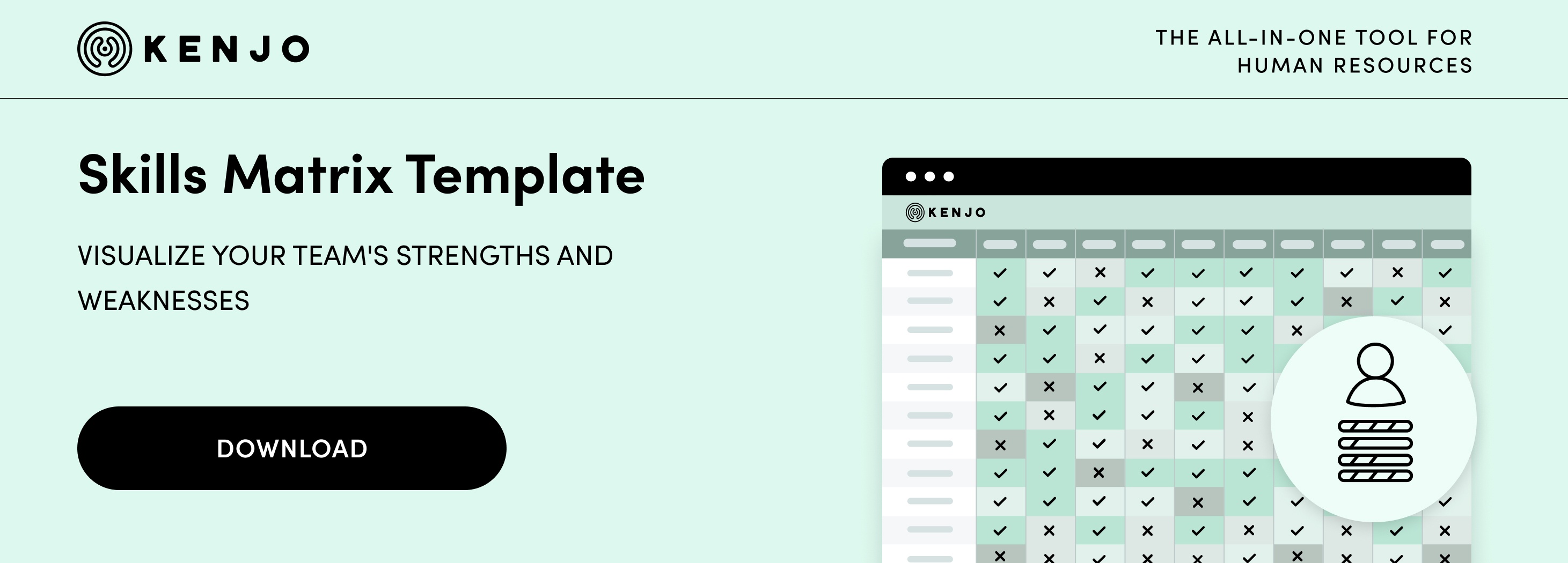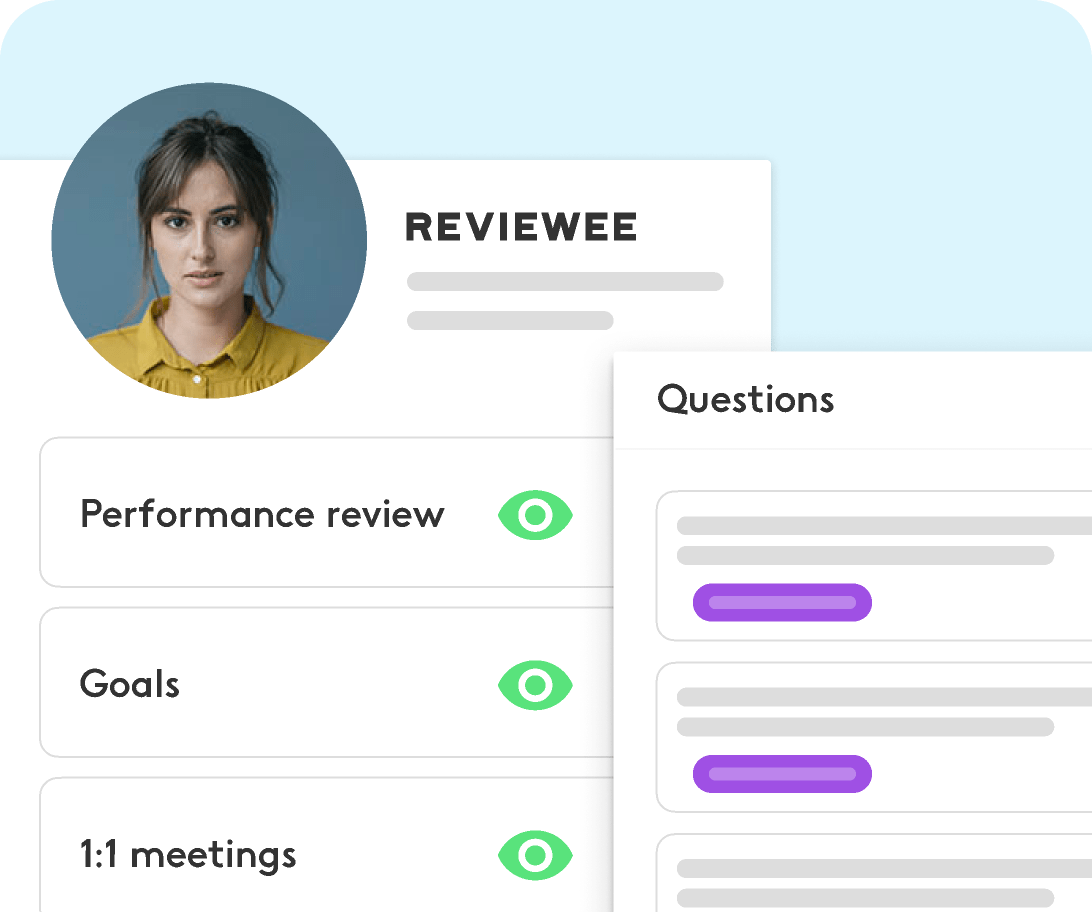What is a Skill Matrix? (+ Free Template)

A Skill Matrix is a handy team and project management tool that helps you
get the most out of your internal talent, and to quickly and easily identify the needs of your workforce. It will help you define standards for recruitment and selection, for
performance evaluation or employee behaviour standards.
Skill Matrix and Performance Management
Working with each employee separately is not enough to make improvements in a team or in an organisation. It´s vital to keep an overview that helps us ensure that the pieces fit together in the best possible way. The skill matrix, or talent matrix, helps us balance team performance and boost the development of their skills. Also, it enables you to align your employees´ abilities with the company´s objectives.
With this tool, we can map the skills needed and desired for a team or project. The
matrix is usually represented by a grid showing the desired competencies, those that are available, and those the team does not offer. When defining processes or creating new teams, having this information to hand is extremely useful as the matrix presents it in a visual layout that´s easy to follow up.
How can a Skill Matrix help my company?
A competency assessment matrix has two primary purposes:
- Firstly, it helps you assess the skills needed for a project or team. To do this, first
make a list of the competencies required to carry out a job. This is a useful exercise
when forming a team or deciding whether to hire new talent. - And secondly, the matrix provides you with information about the skills available
within a team or an organisation. If, for example, a project requires business and data
analysis skills, we will have an internal skills "database" where we can start looking for
the right person. What´s more, this is an excellent way of spotting and discovering
internal talent. - A third purpose is training. Thanks to skill mapping, we can create learning programmes that enable employees to develop all their skills and acquire new ones that the company needs.
Benefits of using a skill matrix
Generally speaking, a talent map or matrix helps boost performance in different areas,
so its benefits are felt throughout the entire company.
- It helps teams to get an overview of the skills available, as well as those that
are lacking. Once the latter has been detected, it´s much easier to hire
professionals that complement the team in question. - The matrix enables you to quickly and easily find substitutes when other
employees are sick or on holiday. When you have a good idea about who does
what, it becomes much easier to find people from within the company who can
support you in this area. - It offers professionals, on an individual basis, a complete picture of their own
competencies and what they bring to the team and the organisation. It´s an
excellent starting point for looking at learning and development opportunities. - It makes people aware of the skills that are required for their team to work
successfully and provides information on skills they need to master. - The tool gives companies a big picture of the skills available among their team
and areas for improvement. This allows them to develop effective training and
education plans. - It helps distribute internal talent in the best and most efficient way. We don´t
always need to hire new professionals to cover specific needs. By checking our
skill matrix, we can often find people who fulfil the desired goals. - Improve internal and external customer service. When teams are made aware of
their skills, we will have more tools and information to prevent problems. - Provide a clear vision for professional development and productivity for every
person in the team and the entire workforce. This also enables us to analyse the
effectiveness of training and development programmes.
Skills Matrix Template - Download it now!
Our Skill matrix helps you to identify the skills of the employees within your company. With our free download, you can quickly and easily identify the strengths and weaknesses of your team and align the skills of your employees with the goals of the company. Our Excel spreadsheet "Skill Matrix" can be easily adapted to your needs by filling in the table with your employee data and requirements and then entering your requirements and the "actual" status of your employees using the evaluation scale.
This way you can easily assess the current performance level of your employees and set targets to keep motivation high. With our qualification matrix, the performance level can not only be assessed on an individual level, but can also be compared for the whole team. As an employer, you can quickly identify core competences within the group and exploit the potential for cooperation within the team. Download our skills matrix today.
Competencies to assess
Each case will have different requirements and this will affect the design of a
competency matrix, although we can outline a series of general skills for
assessment:
- Results-orientated: is the ability to meet set targets, both as an individual and
within a team. This kind of system is becoming more common to assess
employee performance. - Self-development and autonomy: it´s essential to assess your employees´s level of autonomy and their capacity to carry out tasks without needing to be
supervised or managed by another member of the team. - Teamwork: this definitely is one soft skill that is becoming more and more
valued within organisations. People who can collaborate and can work in a team
are sought after. - Emphasis on clients´s needs and requests: customer service skills are also
highly valued as companies are, more and more, looking to improve their client
experience. - Productivity: while it´s not easy to measure employee productivity, it´s one of the competencies that is usually covered in performance matrices and appraisals.
- Quality of service: productivity is important, but the quality of the product or
service must also be high. In other words, it must be carried out to meet
minimum standards. - Ability to work under pressure: another positively valued skill is the ability to
work under pressure; or rather, to high standards or very tight deadlines. - Responsiveness: this is the ability to find the right solutions to problems that
arise unexpectedly. Responsiveness is important in the day-to-day reality of any
job. - Leadership: not everyone is a born leader, but it´s essential to spot people in the
company who have the aptitude to lead people or teams. This is especially
important when it comes to deciding on promotions. - Motivation: measuring employee motivation gives us valuable information for
carrying out initiatives that improve this aspect, along with the sense of
belonging.
Steps for creating a skill matrix
To create your own skills matrix, you are welcome to use our template. We explain in detail which steps are necessary in order to work with our skills matrix.
Download and edit
After you have downloaded the file, you first need to decide where you want to edit the file. If you use the Excel file in Google Drive or another compatible online platform, your changes will be saved automatically. If you are using the downloaded version (.xlsx), make sure you save any changes before closing it.
Customise the Skill Matrix template
Then open the file and go to the "Qualification Matrix" tab. First add the information such as company, name, supervisor and department. Then fill in the table with the employee data and requirements and add your requirements and the "actual" status of your employees. The employee and team tables are then filled in automatically based on your entered data.
Identify potentials and synergies
In order to use the qualification matrix comprehensively, you now have to evaluate the data. Which employees need support? Where can team members support each other? Where is external know-how needed to support the growth of the company? If used properly, the matrix can be another building block to the success of your business. Download the file today.
How Kenjo helps you manage performance review
Our Kenjo performance feedback software supports companies on their way to a new culture. With the graphical representation of all internal employees, key points of outstanding performance can be defined. These objective assessment systems facilitate promotion decisions and identify who needs more support to achieve organisational goals.

Sign up now for our 14-day free trial and you can see for yourself how easy it is to use our software. During the trial period, you can try out all the features of our system and see for yourself how much our software can simplify the entire assessment process in your company.
